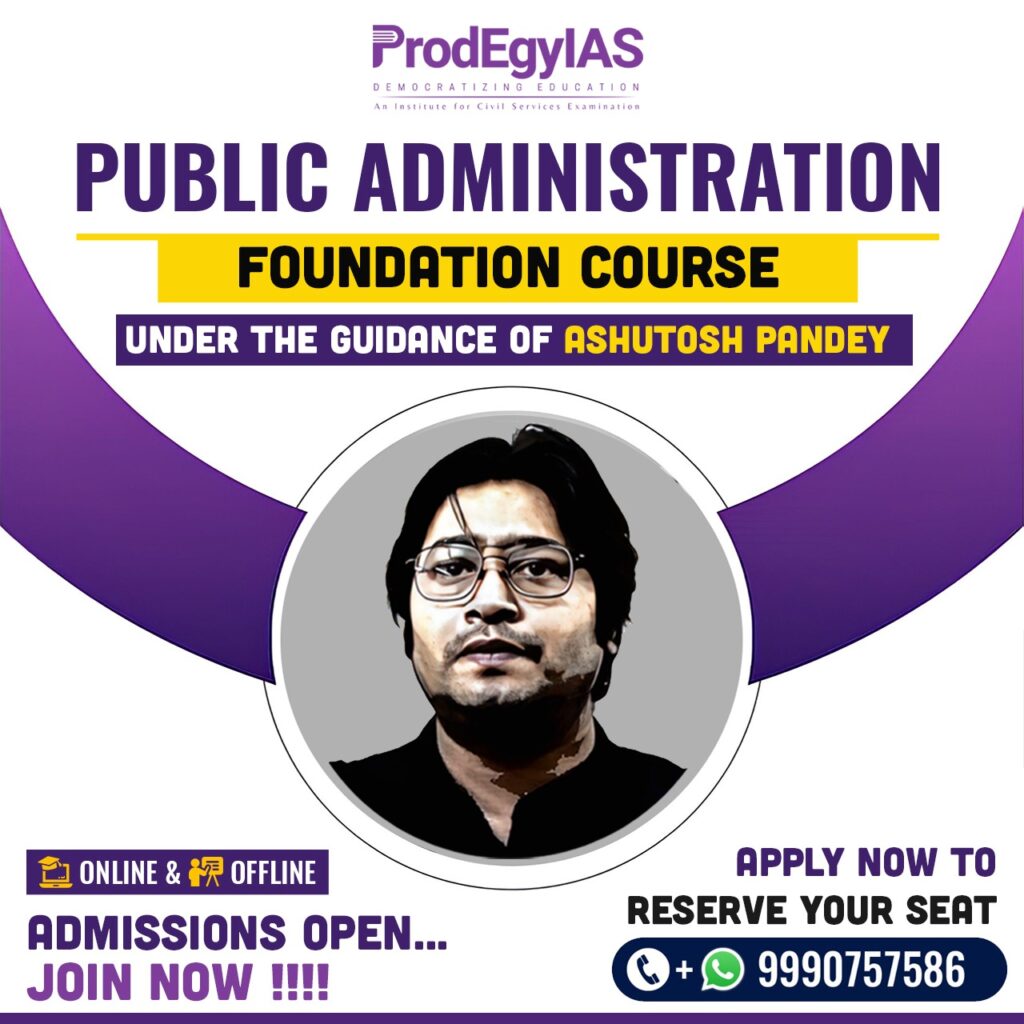Intra-group caste variances, equality and the Court’s gaze
Source: TH Relevance: GS1, GS2: Indian society, Social Justice Prelims: National Commissions for Scheduled Castes, Articles 341, Articles 342. Mains: Q. Has caste lost its relevance in understanding the multi-cultural Indian Society? Elaborate your answer with illustrations. (2020) Q. What are the two major legal initiatives by the State since Independence addressing discrimination against Scheduled Tribes (STs). (2017) |
Introduction:
A seven-judge Bench of the Supreme Court is set to adjudicate on the authority of State governments to sub-classify within Scheduled Castes (SC) and Scheduled Tribes (ST) in public employment.
Background
Circular by Punjab (1975):
- Punjab issued a circular in 1975, reserving 50% of SC seats for Balmikis and Mazhabi Sikhs, which was subsequently invalidated.
- Despite the setback, Punjab persisted, enacting a law in 2006 favoring Balmikis and Mazhabi Sikhs, which was again declared unconstitutional by the High Court.
The 2004 Chinnaiah Case:
- The 2004 Chinnaiah case involved the Supreme Court nullifying Andhra Pradesh’s attempt to amend the Scheduled Castes list, underscoring parliamentary exclusivity in such matters.
- A 2020 Supreme Court appeal raised doubts regarding Chinnaiah’s correctness, prompting the present seven-judge Bench.
Constitutional Aspect:
State Government Authority:
- This case delves into whether State governments possess the authority to sub-classify SCs and STs, which inherently involves Parliament’s exclusive domain.
- Article 341 prohibits alterations to the President’s SC list, sparking debates on intra-group variances and reservations.
Chinnaiah Case (2004) Revisited:
- The Chinnaiah case (2004) saw the apex court striking down Andhra Pradesh’s law amending the SC list, stressing parliamentary exclusivity.
- In 2020, the Court questioned Chinnaiah, citing the Indra Sawhney case which allowed for OBC sub-classification.
Constitutional Vision:
- Articles 14 to 16 of the Constitution promise substantive equality, acknowledging historical caste-based discrimination.
- Reservations should align with this vision, rectifying historical injustices and ensuring substantive equality.
Objective of Sub-Classification:
- Punjab’s legislation doesn’t alter the President’s list but addresses inter se backwardness by prioritizing Balmikis and Mazhabi Sikhs.
- The sub-classification aims to rectify existing reservation inadequacies, fulfilling constitutional obligations to correct historical wrongs.
Article 341 and Sub-Classification:
- Article 341 doesn’t explicitly prohibit sub-classification; rather, it restricts State governments from amending the President’s SC list.
- Sub-classification, without modifying the list, aligns with constitutional principles allowing reasonable classifications for achieving equality.
Government Obligations:
- The Supreme Court, in N.M. Thomas, recognized governments’ authority and obligation to implement reservations, emphasizing equal opportunity.
- State discretion to provide special measures to the most marginalized castes within SCs and STs must uphold the constitutional ideal of equality.
Arguments in Favor of Sub-categorization of SCs:
- Addressing Graded Inequalities: Sub-categorization is advocated as a means to address the graded inequalities prevalent among different communities within Scheduled Castes (SCs).
- Root Cause Concerns: Proponents argue that merely introducing separate reservations within existing categories fails to address the root causes of disparities.
- Recognition of Backward Communities: Sub-categorization proponents highlight that even within marginalized groups, certain communities face greater obstacles in accessing basic facilities.
- Insufficiency of Separate Quotas: The argument suggests that establishing separate quotas within SCs might not sufficiently uplift the most backward communities, emphasizing the necessity for representation across all levels.
Arguments Against Sub-categorization of SCs:
- Inequality within Reservation: Concerns are raised regarding the existing disparity within reservations, with relatively forward SC communities consistently benefiting while more backward ones are marginalized.
- Scarcity of Candidates: Even if higher-level positions were reserved, the most backward SCs might lack sufficient eligible candidates to fill these roles.
- Focus on Existing Schemes: Opponents of sub-categorization stress the importance of ensuring that existing government schemes and benefits effectively reach all sections of SCs before considering further sub-categorization measures.
Steps taken by the GovernmentEarlier Steps: Consideration of Legal Options (2005):
Views of National Commissions:
Recent Step: Formation of a Committee (January 2024):
|
Conclusion:
- The verdict will clarify whether State governments can sub-classify within SCs and STs, addressing historical discrimination and ensuring equal opportunities.
- This landmark case’s outcome will profoundly influence affirmative action, reservations, and the pursuit of substantive equality under the Indian Constitution.
Welcome all
Source: IE Relevance: GS2: Governance Prelims: Citizenship (Amendment) Act (CAA), 2019: Key Provisions, Assam Accord, National Register of Citizens Mains: Significance and issues |
Context:
- Political Controversy: India’s political landscape is embroiled in controversy and division surrounding the Citizenship Amendment Act (CAA) of 2019.
- Disagreements persist regarding the necessity of constitutional amendments upon achieving a specific parliamentary majority.
- Recent Developments: Despite denials of such intentions, the recent pre-election announcement of the enforcement of rules under the CAA 2019 raises concerns about potential erosion of India’s secular foundations.
Notified CAA Rules:
|
Undermining Constitutional Secularism:
- Government Action: The government’s decision to implement the CAA 2019 as a fulfillment of an electoral promise is viewed as a deliberate attempt to undermine India’s constitutional secularism.
- Religious Bias: By granting citizenship based on religious affiliation while excluding Muslims, the Act contradicts the secular nature of India’s Constitution, which guarantees citizenship irrespective of religion.
Impact of CAA 2019:
- Discriminatory Nature: The CAA 2019 permits citizenship for specific religious groups from neighboring countries but excludes Muslims, leading to widespread criticism.
- Lack of Provisions: Allegations surface regarding the Act’s failure to provide adequate provisions for proving persecution despite claims of offering expedited citizenship to persecuted individuals.
Violation of Constitutional Principles:
- Religious Criteria: Articles 5 to 10 of the Constitution outline citizenship provisions without religious considerations, but the CAA 2019 introduces religious criteria for naturalization, contradicting constitutional secularism.
- Liberalization of Proof Requirements: Accompanying rules liberalize proof requirements for citizenship, presuming persecution and adopting a lenient documentation approach, raising concerns about fairness and consistency.
Centralization of Administration:
- Change in Process: The Act centralizes the citizenship application process under the Union government, deviating from previous practices where applications were made locally.
- Concerns Raised: This centralization raises concerns regarding bureaucratic efficiency and accountability, potentially marginalizing local authorities and communities.
Refugee Status Advocacy:
Critics propose granting refugee status to all persecuted individuals regardless of religious affiliation, aligning with international conventions such as the Geneva Convention Relating to the Status of Refugees 1961.
Arguments in Favor of the Citizenship Amendment Act 2019:
- The CAA is advocated for its potential to eliminate legal obstacles to rehabilitation and citizenship, offering a dignified life to refugees who have endured decades of suffering.
- Citizenship rights under the CAA would safeguard the cultural, linguistic, and social identity of refugees, while also ensuring economic, commercial, freedom of movement, and property purchase rights.
- The CAA extends relief to victims of partition who faced religious persecutions upon becoming religious minorities in Pakistan, Bangladesh, and Afghanistan after their conversion into theocratic Islamic republics.
Arguments Against the Citizenship Amendment Act 2019:
- Critics argue that the use of religion as a criterion for eligibility for citizenship violates the fundamental right to equality guaranteed by Article 14 of the constitution.
- Making religion a basis for citizenship eligibility contradicts secularism, which is considered a fundamental aspect of the Constitution.
- Critics highlight concerns that the National Register of Citizens (NRC) in Assam, coupled with the CAA’s provision of citizenship to all illegal immigrants except Muslims, could lead to the targeting of Muslims.
- The Act excludes other persecuted minority groups such as Tamil Hindus in Sri Lanka, Rohingya in Myanmar, and minority Muslim sects like Ahmadiyyas and Hazaras in Pakistan and Afghanistan.
- Protests in Assam cite the violation of the Assam Accord, as the CAA extends the citizenship cut-off date to December 31, 2014, from the original date of March 25, 1971, specified in the Accord.
Way Forward:
- Addressing Muslim Community Concerns: The government needs to alleviate the apprehensions within the Muslim community regarding the potential implications of a nationwide National Register of Citizens (NRC), ensuring their citizenship rights are not compromised due to the lack of required documentation.
- Supreme Court Ruling on Constitutionality: It is imperative for the Supreme Court to deliver its judgment on the petitions challenging the constitutionality of the Citizenship Amendment Act (CAA), akin to its recent decisions on contentious issues such as Electoral Bonds and Article 370.
- Assurance to International and Neighboring Countries: The government should provide assurances to neighboring nations and the international community regarding the fair and impartial implementation of CAA provisions, ensuring that discrimination against Muslims is avoided.
- Inclusion of Other Persecuted Minorities: Consideration should be given to gradually incorporating other persecuted minority groups, such as Tamil Hindus in Sri Lanka, Rohingya in Myanmar, and minority Muslim sects like Ahmadiyyas and Hazaras in Pakistan and Afghanistan, into the ambit of the Act.
- Collaboration with State Governments: The central government must collaborate with and address the concerns of North-eastern states like Assam, assuring them of measures to safeguard their cultural and ethnic identity in light of the CAA’s potential impact.
Conclusion:
The enactment of the Citizenship Amendment Act 2019 and its associated regulations has ignited fervent discussions and legal disputes across India. Opponents assert that the Act erodes constitutional secularism, breaches principles of equality, and fosters religious discrimination. Proposed alternatives, like extending refugee status to all persecuted individuals, are advocated for their broader and more principled approach to tackling persecution. The outcome of this contentious matter holds significant ramifications for India’s democratic ethos and societal unity.




